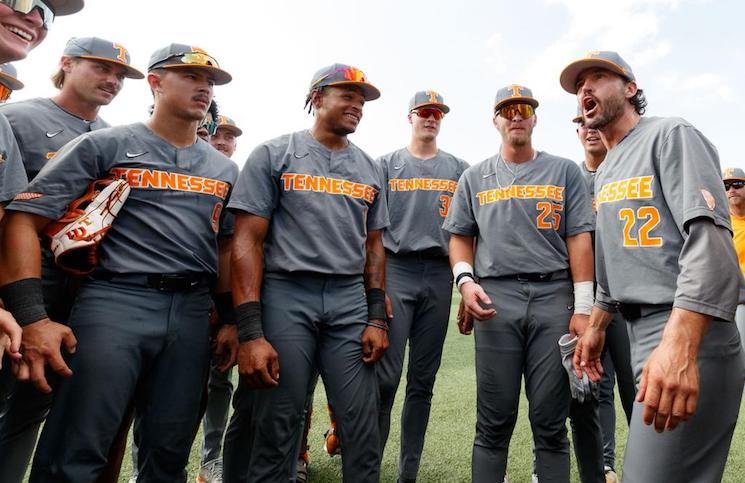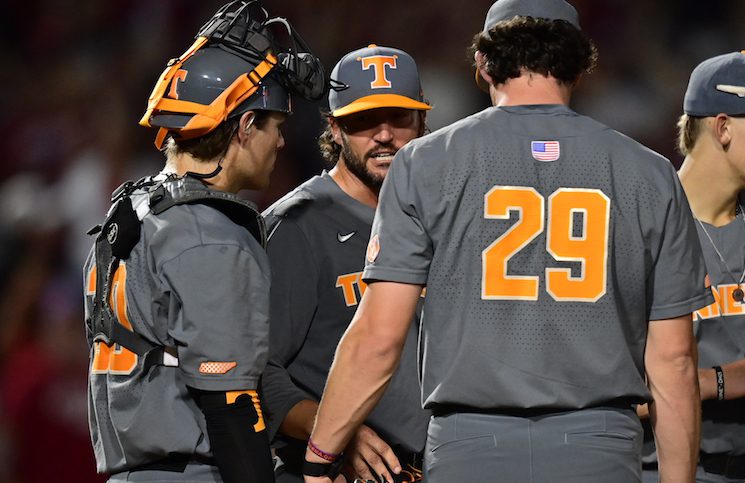
Our “blueprint” takes a deeper look at UT’s upcoming matchup, and focuses on what UT needs to do to win the game. It’s not necessarily indicative of how we expect the game to go.
When Virginia Tech is on offense:
In week one, the Hokies (1-0) defeated the Liberty Flames 36-13, as JUCO transfer quarterback Jerod Evans had a solid first game, going 20 of 32 with 221 yards and four touchdowns. He also showed his mobility by adding 46 yards on the ground on only five carries. Star wide receiver Isaiah Ford reeled in 11 catches for 117 yards and a touchdown. Overall, the VT offense outgained the Flames 458-160.
Head coach Justin Fuente worked offensive magic while at Memphis as he helped Paxton Lynch become one of the nation’s top quarterbacks and an eventual first-round pick. He brought his offensive coordinator Brad Cornelson along with him. Cornelson has implemented the same spread offense at Virginia Tech.
Starting up front, the Hokies do have questions on the offensive line. The blocking for Virginia Tech hasn’t been great the past several seasons. The quality of depth on the line is also a concern. Against Liberty, the Hokies managed 206 rushing yards between 10 different rushers with Evans being the leader. Returning running back Travon McMillan (39 yds) averaged only three yards per run on a total of 13 carries. Throughout the game, the Hokies really didn’t run the ball well. Much of that had to do with the line.
Fuente and Cornelson’s offense is somewhat similar to Tennessee’s as they like to spread the field, utilize the short to intermediate passing game, and have a mobile line. In terms of the offensive line, they like to pull the guards to the opposite side to stop blitzes and/or double team a key defender. The line also looks to be mobile and push up the field. Tennessee’s defensive line didn’t cause many disruptions against Appalachian State, but expect Bob Shoop to bring pressure along the front. The Vols were able to get disruptive on the line when the ends were able to rush the edge and stunt in the middle, which caused the offense to go more horizontal than vertical.
The quarterback is the biggest playmaker in Cornelson’s offense. At Memphis, Paxton Lynch was that guy. Jerod Evans looks to be the next one for Cornelson. Evans had a solid performance throwing for over 200 yards, but it was also against an average FCS team. His favorite target will be junior receiver Isaiah Ford (117 yds, TD). Ford is a first-team All-ACC selection and easily Virginia Tech’s best offensive player. He has breakaway speed and could challenge Cam Sutton. In terms of playing the quarterback, the defense will need to be on its toes once again.
Evans has a strong arm and in their offense, he will definitely throw it around. However, he is also a dual threat and can beat you with his legs. The Vols will most likely need to place a spy on him throughout the game. Tennessee’s defensive ends should attack the edges and cut off any outside running lanes for Evans to escape. If the Vols can manage to get more push along the defensive line, unlike last game, then things could get sticky for the Hokies on offense. Just like with Dobbs, if Evans’ running ability is cut off then the Vols will have a good advantage on defense.
Because of VT’s spread attack, the linebackers will also need to be fully aware. The Hokies ran a few successful misdirections against Liberty. Appalachian State ran several against the Vols and they proved to be a challenge for the defense. Tech’s misdirections against Liberty came in the form of handing the ball up the middle to the fullback with a fake, and also with an end around from the receiver (App. State did this several times).
In order to stop wide misdirections, the defense needs to be more spread out. Place a spy on either the QB or the man in motion. Because Tech’s offense likes to place men in motion, the Vols will need to blitz often and/or at least show blitz to throw them off. Shoop did a nice job with the secondary in the first game by allowing the safeties to play two deep alignments, which challenged the Mountaineers to throw vertically to the end zone (Abernathy’s game-winning deflection). The Vols should keep that same type of coverage especially since Evans wants to throw downfield.
When Virginia Tech is on defense:
Virginia Tech was able to hold Liberty to only 160 total yards thanks to defensive coordinator Bud Foster. Foster is entering his 21st year as Tech’s in that position and he’s regarded as one of the best in the game. His defenses have usually been one of the top in the country year in and year out. In terms of this game, he has been keeping his eye on Josh Dobbs. He said recently how impressed he was watching Tennessee’s film, especially with Dobbs. Dobbs can be a game changer and Foster believes the game against Appalachian State was “nowhere near the best they have to offer.”
Foster’s defensive scheme is usually a 4-2-5 base. However, they have been known to play in five man fronts. He also implements his famous “Bear” defense, which aligns two ends and the nose tackle right on top of the center and two guards. Two linebackers will usually play out on the edges, while the cornerbacks play man-to-man coverage on the receivers. This allows the safeties to attack any quarterback runs in the alleys, which could be effective against a mobile quarterback in Dobbs. This type of defense allowed the Hokies to stop Ohio State’s power spread offense in 2014. With the safeties being allowed as “free hitters” and outside linebackers essentially becoming defensive ends, their defense can easily create a numbers advantage in the trenches with eight or nine guys attacking the run. Tennessee’s offensive line will need to be much improved because Foster’s defense will be tough to manage even in prime form.
In order for Tennessee to win this game, the Vols will need to throw it more. However, UT’s passing game hasn’t been consistent under Mike DeBord. Last week, Dobbs only managed to go 16 of 29 for 192 yards, with a touchdown and an interception. Early in the first quarter, the Vols actually looked good in the passing game as Preston Williams and Ethan Wolf were both targeted for successful first-down plays. The only splash play from the air came from Josh Malone’s 67-yard touchdown reception. Tennessee needs more of those plays to stretch out the defense. Because Foster likes to use one-on-one coverage outside, UT’s receivers should be able to win those matchups since they are much bigger and faster than Tech’s cornerbacks.
Jalen Hurd didn’t have the best game against the Mountaineers, mainly because the offensive line wasn’t helping up front. However, there were some runs where he decided to go horizontal instead of vertical. When Hurd is able to get up field vertically, then he becomes effective. If DeBord can open up the pass game, then the run game will be more successful as well. The offense must also include Alvin Kamara more. Splitting carries between Dobbs, Hurd, and Kamara is when the Vols are dangerous in the run game. DeBord will need to open up the playbook for this game in order to overcome Foster’s defense.



